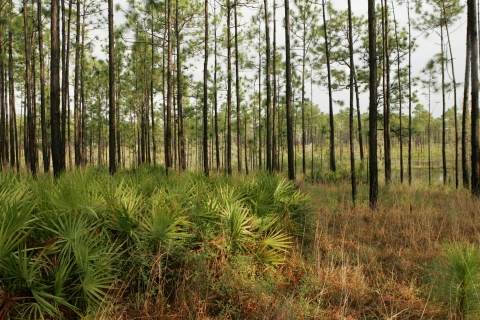Photo By/Credit
USFWS
Media Usage Rights/License
Public Domain
Image
Pine savannas are open, nearly treeless, fire-dependent plant communities dominated by well-developed ground cover and some low-growing shrubs with only scattered trees. The refuge is approx. 5216 acres pine savanna. The original presettlement vegetation on what is now the refuge consisted mostly of pine savannas. Over time, fire suppression allowed pines and shrubs to invade and out-compete the native savanna plants. Less than 5% of the original acreage of this habitat remains in the Atlantic/Gulf Coastal Plain, making it one of the most endangered ecosystems in the country. The refuge savannas are considered the last remaining large patches. The difference between mesic and wet pine savannas is simply a matter of moisture. Found on hydric soils, poorly drained with long periods (days or weeks) of soil saturation, the wet pine savanna soil is generally wet at the surface. They contain widely-spaced pond cypress and sometimes swamp tupelo, slash pine and other hydric trees. Carnivorous plants can be found in this area where the ground is saturated, but not flooded. In the 1960s and 1970s, much of the remaining open savanna was converted to pine plantation by planting and ditching, which disrupted the natural water regime. The ground-level plant community is highly species-rich - one of the highest in North America. Of special interest are the orchids and many carnivorous plants.
